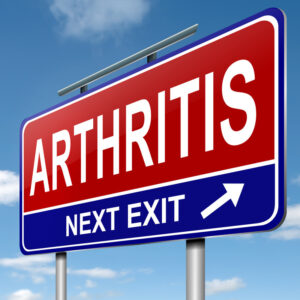03 Dec How do Stem Cells Help Arthritis?
Arthritic damage occurs due to the slow degradation of cartilage from sustained activity in the joints. About one in four patients will develop pain related to arthritic damage throughout their life, with this number jumping to one in two patients by the age of 85. Arthritis is incurable, making symptomatic suppression the only viable treatment to obtain pain relief – until now.
For patients with chronic symptoms due to severe arthritic damage, the last step in treatment is to replace the damaged portion of the joint. Joint replacement surgery can be a very difficult procedure for patients to undergo, as it is both invasive and intensive.
Regenerative treatment through the injection of stem cells offers a nearly pain-free way of potentially re-growing damaged cartilage without the need for invasive surgery.
Why is Arthritis Difficult to Treat Conventionally?
One of the largest complications with arthritic damage is that it affects the cartilage of the joint, which is the lining that acts as a cushion between bones. Cartilage prevents the bones from grinding against one another during movement, but can be gradually worn away in the process.
When areas of cartilage are thin enough for the bone to touch against bone during movement, painful spots of inflammation occur. Unlike other cells of the body, cartilage does not naturally re-grow when it has been damaged.
How do Stem Cells Replace Cartilage Damaged by Arthritis?
 Stem cells have the unique ability to become nearly any other type of cell in the body, including cartilage. When they are placed into an area of tissue, stem cells have the capability to grow into the type of tissue they are surrounded by.
Stem cells have the unique ability to become nearly any other type of cell in the body, including cartilage. When they are placed into an area of tissue, stem cells have the capability to grow into the type of tissue they are surrounded by.
Stem cells provide a means for new cartilage to be grown in an area where arthritic damage has occurred previously. New cartilage will allow for the smooth movement of the joint, reducing areas of inflammation and restoring function that had been diminished due to pain.
Where do these Stem Cells come from?
The stem cells for arthritis are named mesenchymal stem cells and are typically harvested from the adipose tissue of the body. These cells are gathered from a number of small incisions into excess adipose tissue, with the majority of tissue used coming from the waist. After tissue has been taken, an enzyme will be applied to separate the fat cells from the stem cell concentrations.
Adipose tissue is used more commonly than bone marrow because dormant stem cells appear in much greater numbers in adipose tissue. Adipose tissue contains up to 500 times the amount that of stem cells that could be gathered from a similarly sized sample of bone marrow.
How are Stem Cells Applied to Arthritic Joints?
The most common method of stem cell application is an injection into the damaged tissue. This allows for the  direct delivery of stem cells into the type of tissue that need to become, stimulating the regenerative process of the area to obtain systematic pain relief.
direct delivery of stem cells into the type of tissue that need to become, stimulating the regenerative process of the area to obtain systematic pain relief.
Stem Cell Therapy for arthritis is offered by TeleHealth with Board Certified doctors who have over 20 years of combined experience in stem cell treatments. This includes treatment of the hip, knee, shoulder, elbow and more.
Call (888) 885-8675 to receive the top California stem cell treatment.



No Comments